Few anglers can be spotted along the shores of the Island during the winter, but many are preparing for their next catch.
For more than 30 years the Martha’s Vineyard Rod & Gun Club has held fly tying classes for fishermen of all levels. This year’s gatherings began last week, and continue on subsequent Tuesdays through March.
Cooper Gilkes, owner of Coop’s Bait and Tackle Shop, has been there since the beginning.
“When we started, we had a cold winter night and everyone was twiddling their thumbs and a few people got together and said let’s tie some flies,” he recalled. “It’s turned into something really nice. We have some of the best tiers on the Island come and teach.”
The first class of this year was taught by Cooper (Little Coop) Fersen, who was named after Mr. (Big Coop) Gilkes.
“Between him and my father, they taught me everything I know about fly fishing and fly tying,” Mr. Fersen said. “The wealth of knowledge I got between them is incredible.”
Mr. Fersen works has a charter captain, and said his father worked for Orvis, a company that specializes in fly fishing and sporting goods.
“I like teaching. The ultimate goal in my life is to see someone tie a fly and catch a fish. It’s full circle,” he said.
The sun had set by the time anglers gathered at the rod and gun club this week. Each participant sat in front of a vice as Mr. Fersen instructed the class on how to angle the fish hook, directing the barb downwards and keeping the shank parallel to the table.
“Some of my worst ties catch the most fish,” he told the class. “It’s about how it looks in the water and the silhouette, not how it looks here.”
He explained how to tie synthetic fur onto the hook and shape it so it resembled a squid, which are popular with striped bass.
Martha and Michael Klein are both new to the world of fly tying. Ms. Klein attended one class last year, while Mr. Klein was tying for the first time.
“I’m back because I’m going to be doing a lot more fly fishing,” Ms. Klein said. “It’s cool because there’s a different person each week and it is people who fish these waters so you learn what to throw, other intel.”
Ms. Klein found gluing the eyes onto the squid fly the most challenging part of the process.
“It’s like crafting and it’s fun to see how everyone’s is different,” she said.
As Mr. Fersen explained how to lay the eyes onto the fiber, Jaime Boyle, who has been tying since the late ‘80s, explained that tab eyes, which can be tied onto a fly instead of glued on, were also an option.
Mr. Boyle will teach the class on Feb. 11. This past week he was in attendance at the request of his nine-year-old son, Tyler, who began tying last year. As most of the group started on their second squid flies, Tyler tied strands of peacock feathers onto a creation of his own.
“I don’t know what it is. I’m just tying,” he said.
Others had been coming for decades. Bob Gray said he has been tying flies on and off for over 20 years.
“It’s something to do in the winter. Hunting season finished up and this is the last thing,” he said.
Stephan Pond also came to socialize. Although he has tied a few flies, he usually trades venison for flies from Abe Pieciak.
“I’m here to get out of the house in the winter,” Mr. Pond said. “With Abe, I can’t compete with his Menemsha minnows.”
Mr. Pieciak is an avid fly tier who embraces gathering all sorts of materials for his flies. At his home in Aquinnah, he gestured to a bit of fur he was tying on a hook.
“The hunters here save me their deer tail,” he said. “The thing about buck tail is it is hollow hair, so when it’s in the water, it just looks so good. It almost breathes.”
Mr. Pieciak said that successful flies can be made from pretty much anything.
“If you’re a kid you could walk around the house and find stuff,” he said. “If you look in the junk drawer there’s probably a needle and thread...and a pillow on your couch that’s full of down feathers, right? Grab those, grab the hook, tie the thread around it — you could go out and catch a bass in the right situation.”
Mr. Pieciak said that tying flies has made him a better observer. He is more aware of what fish are eating and how they follow the bait.
“That’s the best thing about the fly — you could tune in and see what they’re eating and what they’re doing and go home that night, tie the fly, go back the next day,” he said. “Catching the fish is awesome, but figuring out and knowing what they’re eating and where they’re going to be with this certain wind and certain tide . . . it’s pretty amazing.”
Mr. Pieciak is a professional artist, an outlook he carries into fly tying.
“The hook is kind of like a canvas and you have all these mediums around you,” he said. “You think of it something like, I saw this weird little fish today, I’m going to try making that.”
Liz Packer echoed Mr. Pieciak’s sentiment while working on a new fly at the rod and gun club.
“It’s functional art that came out of necessity,” she said.
Ms. Packer said she mounted the first fly she created on her wall. Another fly also hangs on her wall — the first one she created that caught a fish.
“You’re trying to figure out what’s going through a fish’s mind,” Ms. Packer said. “You’re fishing and you’re thinking how would I tie that. You’re always developing.”

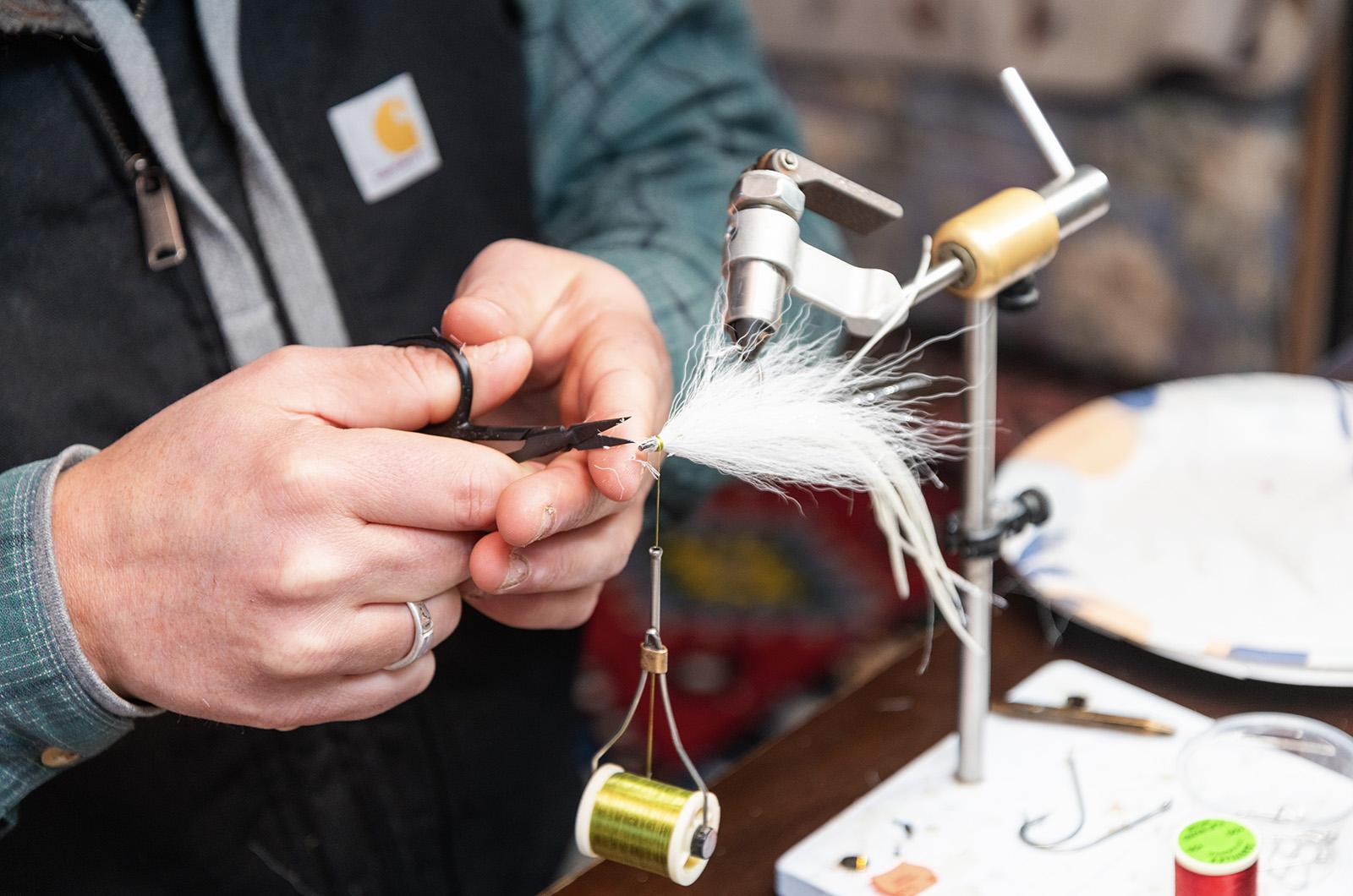
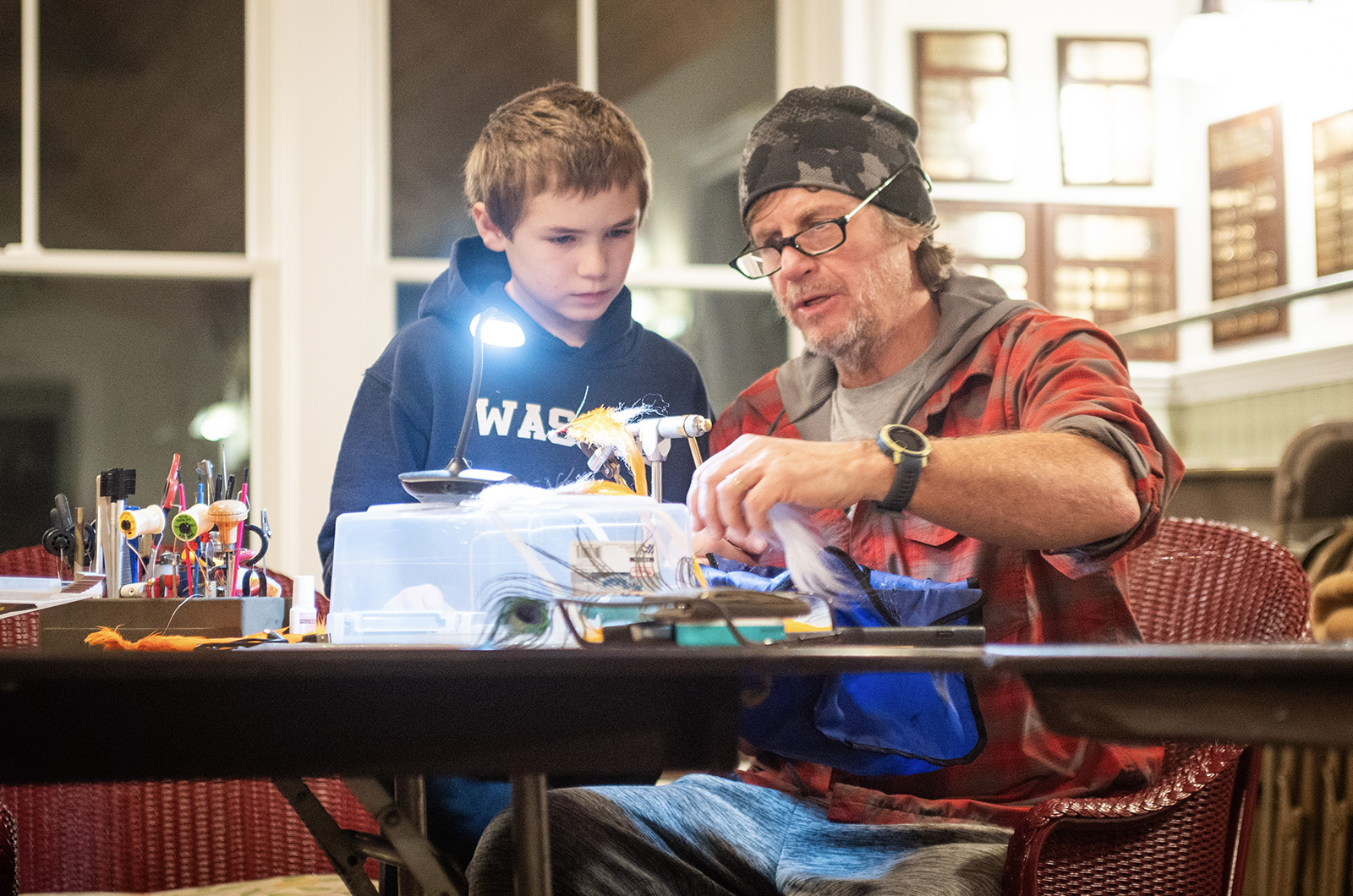
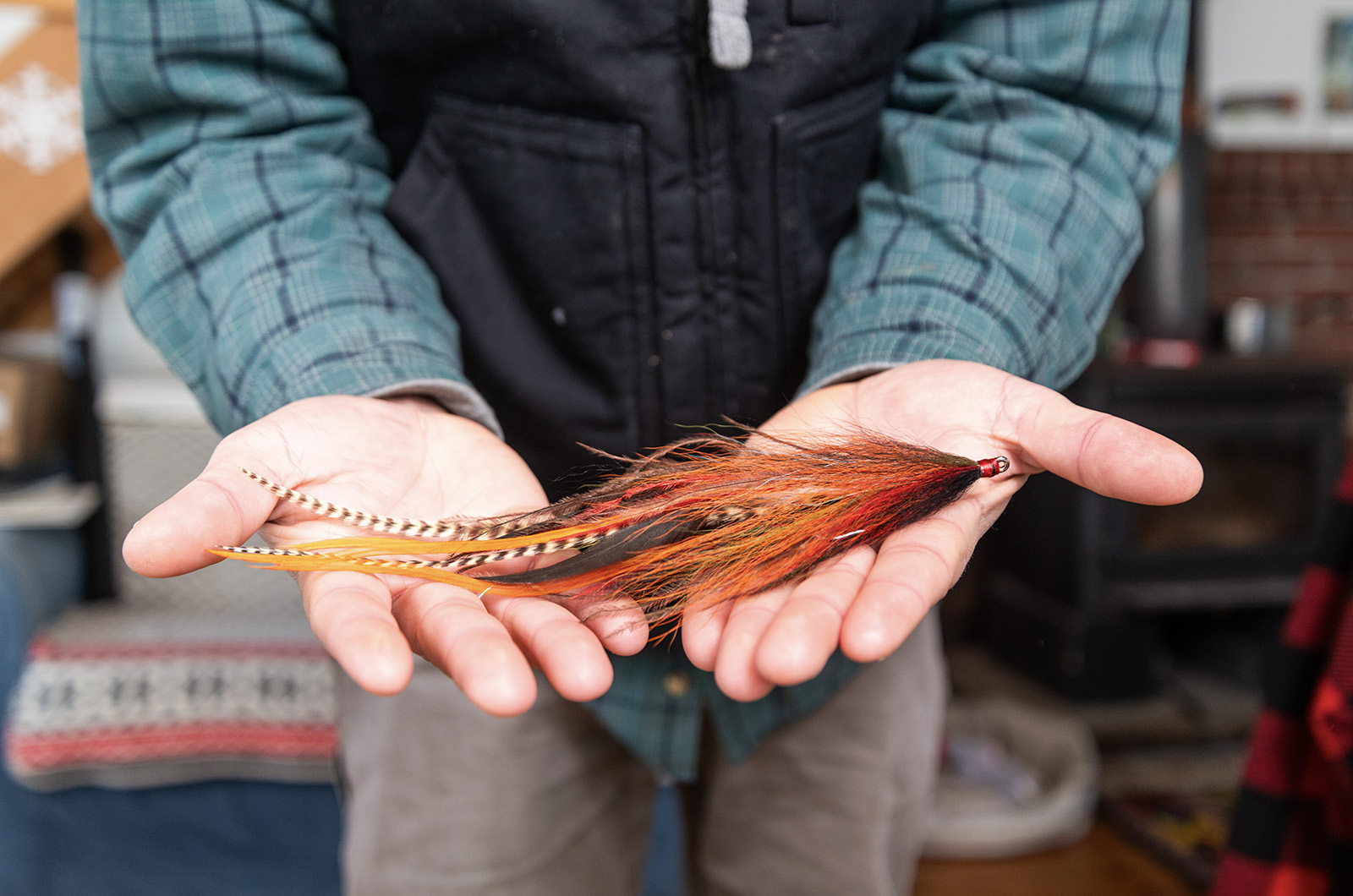
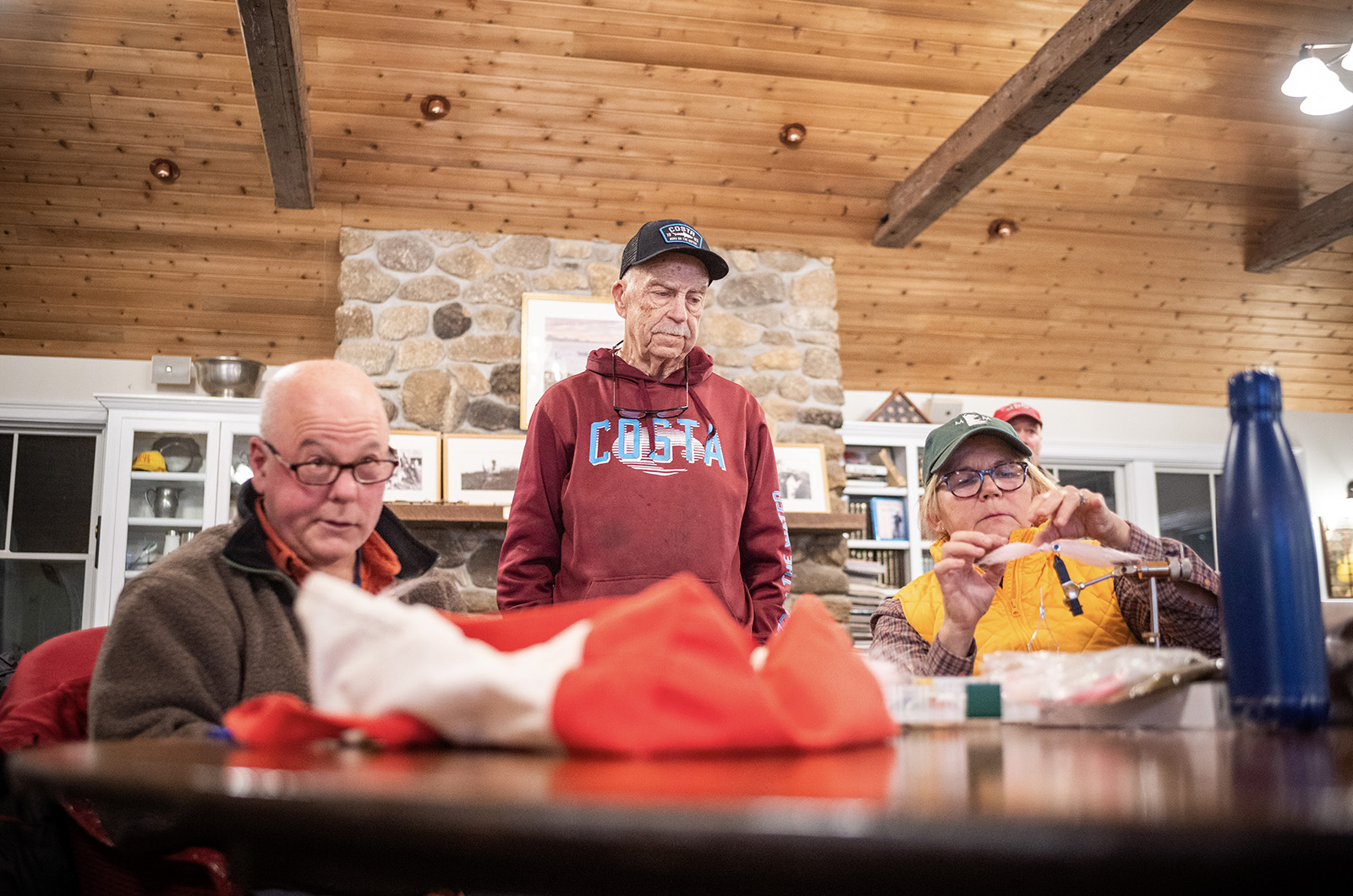
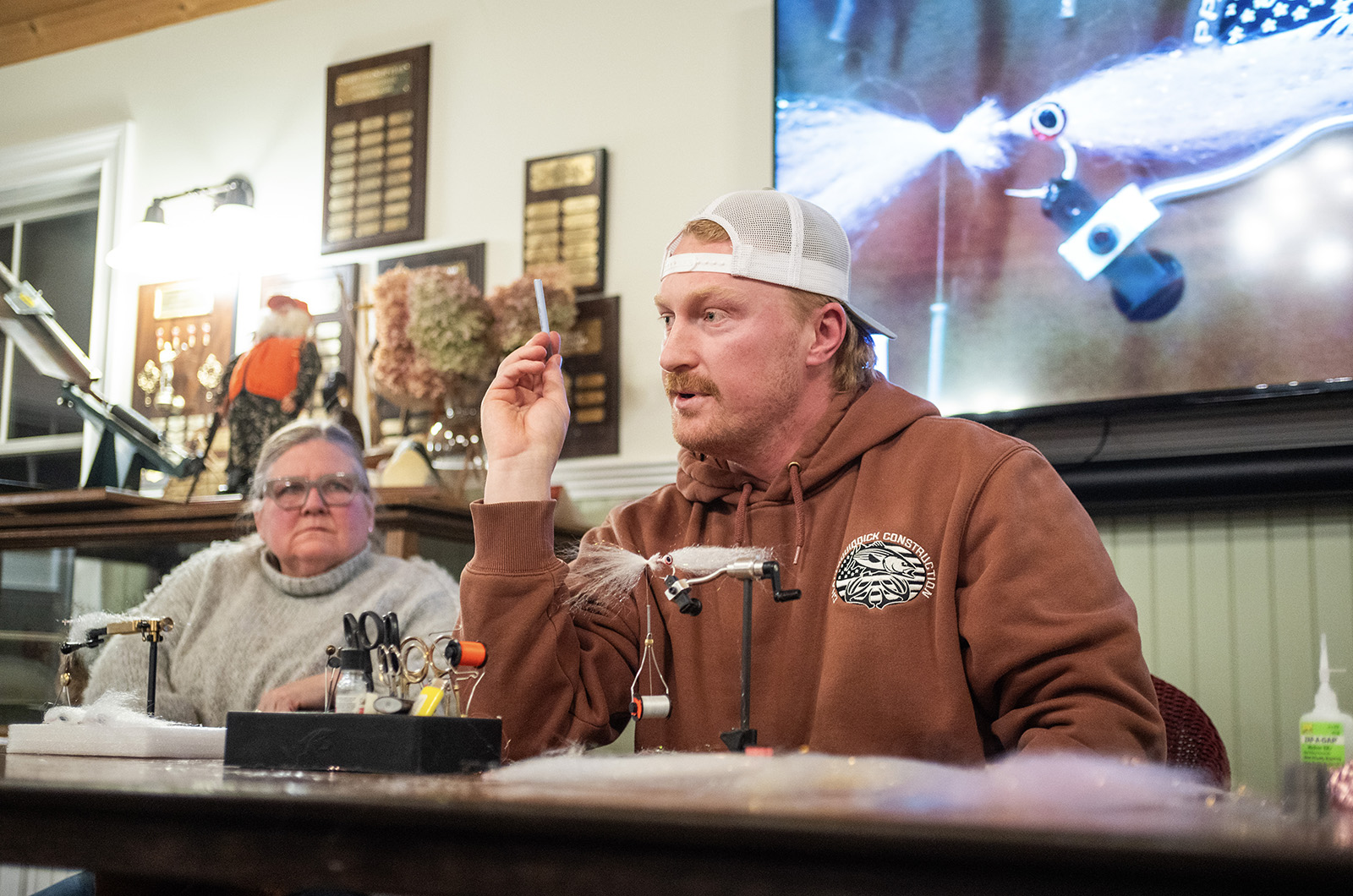




Comments (1)
Comments
Comment policy »